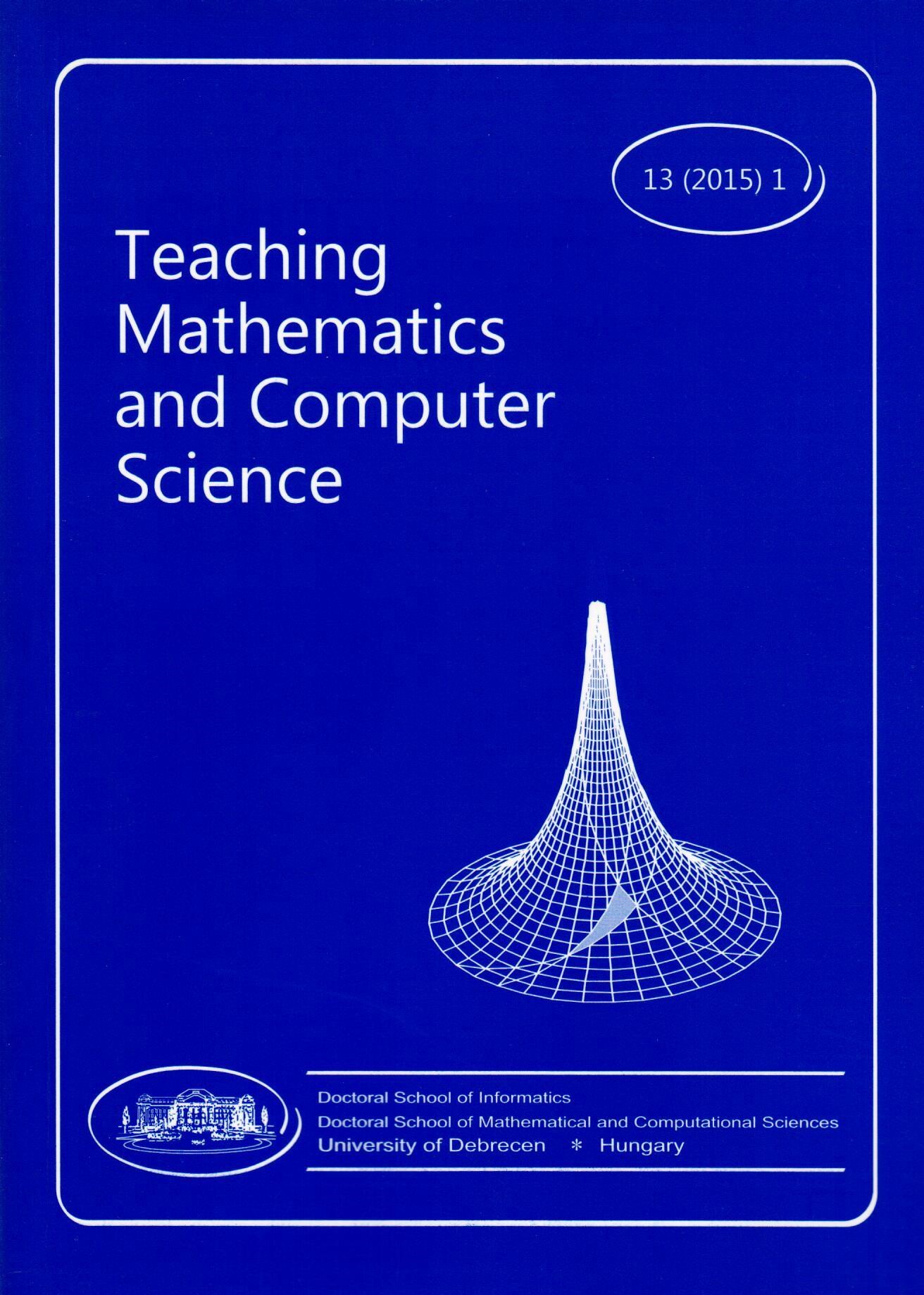Articles
Maximum and minimum problems in secondary school education
Published:
2015-06-01
Author
View
Keywords
maximum and minimum problems theorem of the means elementary methods learning difficulties functions of several variables the method of the indetermined parameters
License
Copyright (c) 2015 Zsolt Fülöp

This work is licensed under a Creative Commons Attribution 4.0 International License.
How To Cite
Selected Style:
APA
Fülöp, Z. (2015). Maximum and minimum problems in secondary school education. Teaching Mathematics and Computer Science, 13(1), 81-98. https://doi.org/10.5485/TMCS.2015.0386
Abstract
The aim of this paper is to offer some possible ways of solving extreme value problems by elementary methods with which the generally available method of differential calculus can be avoided. We line up some problems which can be solved by the usage of these elementary methods in secondary school education. The importance of the extremum problems is ignored in the regular curriculum; however they are in the main stream of competition problems – therefore they are useful tools in the selection and development of talented students. The extremum problem-solving by elementary methods means the replacement of the methods of differential calculus (which are quite stereotyped) by the elementary methods collected from different fields of Mathematics, such as elementary inequalities between geometric, arithmetic and square means, the codomain of the quadratic and trigonometric functions, etc. In the first part we show some patterns that students can imitate in solving similar problems. These patterns could also provide some ideas for Hungarian teachers on how to introduce this topic in their practice. In the second part we discuss the results of a survey carried out in two secondary schools and we formulate our conclusion concerning the improvement of students' performance in solving these kind of problems.

 https://doi.org/10.5485/TMCS.2015.0386
https://doi.org/10.5485/TMCS.2015.0386






